Sixth, because they were misunderstood, they may have felt freer to use deception and bribery. Again, a parallel can be made with the gypsies of modern Jordan. Because of their low social status, they are often the scapegoats when a crime is committed. Consequently, since they are thought of as liars and thieves already, they sometimes use this identify to hide behind. Using lies and stories they quite often manipulate situations to their own purposes, especially when promoting the image that they can tell fortunes.If you have not read Roland Muller’s article “Honor and Shame in a Middle Eastern Setting”, then please do so, before reading this page. It will help you understand some of the background thinkng behind this article.
First, let us review the three major periods of Nabataean history and the characteristics of Nabataean society during these periods.
Early Period (before 85 BC)
The early Nabataeans were nomads with early Arab thought and religion, known as pirates and raiders as well as traders and merchants. They were also known as pimps and prostitutes, caravan drivers, opportunists, deceptive, and tellers of tales and lies, and cowards.
Middle Period (85 BC - 106 AD)
During this period of time, the Nabataeans experienced sudden Hellenization. This Hellenization had been taking place among the settled people since the 4th century BC, but the Nabataeans seemed to only accept it during this period. Suddenly they started moving towards urbanization, rapid accumulation of extreme wealth, and rising status among the surrounding nations.
Later Period (106 AD onward)
During this last period of the Nabataeans, their civilization experienced total Romanization, and complete subjection with the dispersion of the wealthy merchants across the Roman Empire.
In this chapter, we want to concentrate on the social changes that would have taken place as the Nabataean people moved from each stage to the next. The move from their early period to the middle period would have entailed moving from a nomadic point of view to an urban point of view, and would also have included adopting Hellenization. In 106 AD, things changed again, and this time their culture changed as they moved from a Nabataean identity to being absorbed into the Roman Empire. While most cultures and civilizations made gradual cultural changes, the Nabataeans seemed to undergo radical social changes as their financial fortunes changed.
Early Period
As we have mentioned earlier, Diodorus describes the Nabataeans as nomads who: “r*ange over a country which is partly desert and partly waterless, though a small section of it is fruitful… they lead a life of brigandage and overrunning a large part of the neighboring territory they pillage it. Some had penetrated to the Mediterranean coast where they indulged in piracy, profitably attacking the merchant ships of Ptolemaic Egypt.*”
He goes on to state: “…they bring down to the sea frankincense and myrrh and the most costly of spices, receiving them from those who convey them from what is called Arabia Felix. They are conspicuously lovers of freedom, and flee into the desert, using this as a stronghold … They fill cisterns and caves with rain-water … making them flush with the rest of the land; they leave signals there which are known to themselves, but not understood by anyone else.”
As we stated in other papers, many of the characteristics attributed to the Nabataeans by Diodorus would have made them detestable in the eyes of the established empires of the time, as well as detestable in the eyes of their fellow nomads.
In the Bible, the prophet Malachi tells us “that Esau’s mountains have been brought to ruin and his heritage given to the jackals of the wilderness.” Several writers have wondered if this reference could be referring to literal jackals, or was it a derogatory name meant to demean the Nabataean people who occupied Edom after the Edomites.
If the Nabataeans were so detestable in the eyes of others, what would this do to their lifestyle? How would this affect some of the issues that we have been discussing in this book? Below, I list nine results that I believe could have had an impact on the Nabataeans as a result of their being ostracized.
First, the Nabataeans may have been denied water at tribal wells. Most wells in the desert are owned by those who dug them, or by those who control the area. Many times in the Bible and in other historical records we read of disputes over the ownership and use of wells. It was common, up until the establishment of central governments in this last century, for wells in the desert to be owned by one particular tribe. This tribe would deny the use of their wells to those they were ostracizing. As the tribes were often at odds with one another, denial of water in this way helped control the extent that other nomads could range in the desert.
If the Nabataeans were refused access to local wells, then, in order to move from one community to another, and in order to transport frankincense, they would have had to develop their own water sources. I believe that this was one of the main factors behind the Nabataeans passion for developing water collecting systems and why they would hide them in the desert and tell no one where they were. It is interesting to notice that some of these water collection systems are relatively close to established wells. These cisterns were probably back up watering spots in case the Nabataeans were denied access to the local water.
Later, after the Nabataeans took control of vast areas of land, they developed many more water collection systems in order to sustain agriculture.
Second, as the Nabataeans moved from the central Arabian deserts, they moved into villages that were close to centers of civilization but slightly away from them. For example, the Nabataeans lived at Selah near Busheira, the Edomite capital. The site of Selah is supposedly the place where Amaziah threw 10,000 Edomites off a cliff to their death. (2 Kings 14:7, II Chronicles 25:11-12) If this is the site, then perhaps the Edomites avoided it, as one would a graveyard today, and thus it made a natural place where the despised Nabataeans would settle.
A modern parallel of this might be found among the gypsies of the Middle East. These people are considered outcasts from regular society. They are nomadic and move from place to place but usually camp near major towns or sources of employment. Gypsy women are often sought out as experts on occultic or magical power, and as prostitutes. The men work as laborers in agriculture and metal work. Middle Eastern gypsies have no civic or political center, yet they have a leader, known as the ‘king of the gypsies.’ He holds his court wherever he sets up his tent, but the city that he might reside in is never considered his ‘capital’.
Third, the Nabataeans knew the desert well, and I believe they knew trails in the desert not known to others. Many of the Nabataean water sources in the desert are not traditional watering sources, but rather water collection places, off the beaten track. As an example, in Wadi Rum, the traditional ancient water sources were springs and wells, such as the well known today as Lawrence’s well. The Nabataeans, however, developed water collection systems farther down the caravan trail, half way to Humeima. Was this because initially they did not have access to the well? In this was the case, the Nabataean caravans may have taken a different route from the ancient routes. This may also help explain the presence of many Nabataean graffiti in these remote locations.
Fourth, the Nabataeans developed secret symbols and signs. Diodorus Siculus, who wrote Bibliotheca Historica (60-57 BC), tells us “they leave signals there which are known to themselves, but not understood by anyone else.” This is common practice today with the Gypsies of the Middle East, who continue to use their own language among themselves, and even in the presence of others. They use Arabic only for dealing with the outside world. Could Diodorus be referring to a Nabataean practice of writing with a South Semitic alphabet, which was unknown to the people in northern Arabia?
Fifth, did the Nabataeans develop dual or triple languages? Did they use the common trade language as well as a private protected language for religious/civic reasons? Archeologist Philip C. Hammond writes: “It has been suggested that even here the Nabataeans veiled themselves in confusion and that the written language, which has come down, was purely the official tongue of commerce and government, while the people retained their Arabic dialect as a spoken language. This might explain the gradual emergence of Arabisms in later inscriptions as well as the preponderance of Arabic names retained though out the entire Nabataean period along with certain linguistic shifts from Aramaic usage.”
Seventh, did their low social status foster a desire to travel, especially to places where they were not known, and where they could be honorable? Why did the Nabataeans seem to enjoy going on such long journeys? They seem to have ranged from Europe to China. Could this desire to travel have been fueled by an unconscious desire to be in places where they were not known, and were respected as wealthy merchants? The civilizations of Southern Arabia, India, and China would have appreciated the Nabataeans who showed up with gold, silver, and other precious goods, and who bought the local produce to export abroad.
Eighth, did their low social status produce a desire to excel at things that others struggled with? For example, why did the Nabataeans persist on making perfectly square water reservoirs? Where did they get this fascination for perfectionism? Why did they appreciate and develop such fine pottery? Why did they suddenly start breeding such fine horses? Why did they build such magnificent temples and funerary facades? Was there an underlying sociological factor that propelled them to seek honor and to present themselves as honorable, successful people?
Ninth, could this desire for acceptance and honor explain what led them into such lavish spending of public funds for impressive public buildings? A modern parallel to this might be the Arabs of Saudi Arabia and the Arab Gulf states. In the 1980’s, I occasionally visited the palaces and courts of Sheik Zaid, and his family in the United Arab Emirates, and saw first hand the wealth and opulence of the oil-rich Arabs. On one occasion, I visited with Sheik Shekaboot, the eldest of the brothers. His palace was huge, with acres and acres of marble buildings. Yet, when we ate, we sat on the floor, and the meal was served on the same old beat-up trays he had used for years in the desert. In many ways, he was still the old Bedouin sheik of the desert, even though he was sitting on Chinese silk carpets in a marble mansion.
If one accepts the theory that the Nabataeans were held in low respect for many centuries, until they obtained sufficient wealth from their trading ventures to buy themselves into a place of respect among the ruling powers of the world, then many of the anomalies of the Nabataean people suddenly make sense. Otherwise, you have a nomadic people from the deserts of Arabia who did fantastic things without any explanation of how and why they rose above the people around them.
Middle History
In 85 BC, Nabataean fortune changed. For the last several hundred years, they had slowly been gathering wealth, but in 85 BC they were suddenly catapulted onto the world stage. Damascus had been at the center of a world class struggle between warring Greek generals and now invading Roman forces. In 85 BC, Aretas III was invited by the citizens of Damascus to be their ruler and protector. Imagine the honor he felt, as he suddenly became a world class ruler. Such a move was probably a great surprise to many. I am sure that the Nabataean ruler was scorned in many circles. Suddenly the gypsies, as it were, had stepped into political power.
Could this be possible? One parallel might be found in the independent Zott State in Mesopotamia. During the reign of Caliph Omar I (642 AD), the Arabs captured Haumatu-Zott, the district of the gypsy Zotts on the border of Iraq and Iran. (Le Strange, pg. 244) These gypsies then wandered for two hundred years until they managed to establish their own independent state, which lasted from 815 to 856 AD. A small number survived to become the Zott gypsies (Nawar) who wander as nomads today in Jordan, Syria, and Israel. Today these Nawar are despised by the settled Arabs, and are considered the very bottom of the social scale.
In the same way, one wonders what reaction the civilized world had, when the nomadic Nabataeans suddenly gained control of a world class city.
History tells us that Aretas III made a series of changes that immediately raised his level of honor in the western world. The first thing he did was adopt a Greek name, ‘Philhellene.’ After this, it became increasingly popular for successful Nabataeans to use Greek rather than Nabataean names.
Second, he began to mint coins with his new name on it. These coins contained 97% silver, and were of equal value to that of the Roman coins of his day.
Third, Aretas III instigated the beginning of Nabataean architecture. First, temples were constructed. Then new cities were begun with public buildings. Within a few years, he had begun the construction of three religious cities - Petra, Egra, and Medina Saleh. Added to this, he had started to build a new capital city, Bostra, and other cities such as Humeima, that were founded at desert caravan crossings.
Fourth, he changed the primary mode of Nabataean transport from the camel to the horse. From this point on, the Nabataeans bred huge herds of horses to serve in cavalry units, and horse breeding took on a major role within the emerging kingdom.
All of these changes were obviously designed to raise the status of the Nabataeans from that of lowly caravan drivers or merchants, to a respectable, cultured, civilized people. Architectural designs were borrowed from every nation around them. Whatever would impress was implemented. Buildings like the Treasury in Petra were constructed in such a way as to impress those who entered Petra through the Siq, and contained architectural elements from a variety of civilizations.
However, not only was the entire civilization rapidly moving up the social scale, they were quickly adopting the western method of establishing laws and rules. It would take several generations, but within a century, the Nabataeans would have moved from being the lowly desert nomads, to being powerful, respectable merchants in the Roman Empire.
All of these changes had drastic effects on the kingdom. The cost was astronomical. Nabataean trade was stepped up. Taxes and profits were pressed to the limit so that money could be poured into extravagant projects.
Strabo comments about this stage of Nabataean life: “The Nabataeans are… so much inclined to acquire possessions that they publicly fine anyone who has diminished them, and also confer honors on anyone who has increased them.”
He goes on to say: “Their houses are sumptuous, and of stone; and their cities are without walls on account of the peace which prevails among them.”
During the 191 years from 85 BC to 106 AD, the Nabataeans poured their wealth into anything and everything that would make them appear honorable and acceptable to the out side world.
This amazing effort had two effects. First, it produced the image that the Nabataeans desired. The Romans treated them with respect, even co-operating on several ventures with them. Secondly, however, this flurry of activity brought about the bankrupting of the kingdom. In their pursuit of honor, they poured their entire efforts into a facade of wealth and success.
Decline and Fall
In Appendix A of this book, I have supplied a list of the Nabataean kings (in the timeline). This list, however, is controversial. We are not sure exactly how many rulers there were. Even the Roman numerals behind a king’s name have been added by western historians, and they are not found in any original inscriptions, not even on coins.
However, remarkably, there are only two kings out of the eleven, whose reigns lasted less than ten years. Aretas IV, the contemporary of Christ ruled for 48 years, and Rabbel II, the last leader, ruled for 36 years. This provides evidence of a very stable form of leadership. This is amazing when you consider that the Nabataean kings ruled by popular approval and not authoritarian rule.
Strabo tells us that the kings were concerned with the religious and social affairs of the people. This is probably why Syllaeus, who was known as the Epitropos, (brother, guardian or chancellor) did the negotiations with foreign powers. However, the final ruler, Rabbel II, seems to have simply given up and turned over his kingdom to the Romans. There have been a number of speculations about this by historians.
First, some historians assume that Rabbel II died, and it was then that the Roman army entered. However, there is no evidence for this. Rabbel was only a child when he came to the throne, and his mother, Shaqilath, acted as regent for six years until he was old enough to rule. If we assume he was 18 years old when he began to rule in 70 AD, then he would have been 54 years old in 106 AD. If he began to reign when he was younger, say 14, then he would have been only fifty years old in 106 AD. There is no mention of his dying at this time in historical records. He simply passes from the scene, being known as “he who brings life and deliverance to his people.”
Some historians have speculated that the Romans must have invaded the Nabataeans and that a battle must have taken place. Again, there is no evidence of this. If there was such a battle, surely Roman historians would have noted it in their history books.
So, strange as it seems, Rabbel II seems to have simply opened his empire up to Roman occupation. But it may not have been this simple. The Nabataeans were merchants and experts at bartering. Perhaps something else happened.
The Setting
Let’s consider the setting of the stage, for the act when the Nabataeans opened their kingdom to the Romans.
First, Rabbel II witnessed the terrible destruction of much of the country to the north of him by the Roman army. The Roman Empire was now crushing those who chose to resist it. Jerusalem had been sacked in 70 AD, followed by a number of other major centers. The price to be paid for resisting Roman occupation was huge. Along with this, the Roman Empire was the principal European trading partner of the Nabataeans and thus could not be offended. Also, in the Negev, hostile tribes had attacked a number of cities, and Meda’in Saleh in Saudi Arabia had been affected by civil war.
In this setting, Rabbel II may have done what any good Nabataean merchant would have done. He would have negotiated with the Romans, and for a price, he would have given up the throne, and allowed the Romans to occupy his land.
What was his price? Historical records do not tell us, but it is my feeling that the Nabataeans obtained an excellent price for their kingdom. The wealthy were allowed to move their businesses out of the restricted Nabataean inner kingdom and roam throughout the Roman Empire as Roman merchants. It is interesting to notice that Nabataean inscriptions have been found in Italy near Naples, and on the Isle of Rhodes where there is a Nabataean temple. This signifies that a rather large Nabataean settlement had moved to this location in the century that followed Roman annexation.
Added to this, Roman merchants, or at least, merchants on behalf of Rome, suddenly conducted an amazing trade with India, Ceylon, and Asia. In the Periplus Maris Erythraei shipping manual we have a record of some of the ports and trade items involved in this maritime trade. Later these merchants even transported an official party of ambassadors from Rome to Canton, China. Therefore, I am suggesting that it is possible that from 106 AD on, many of the historical references to Rome’s merchant marine include reference to Nabataean merchants acting on behalf of the Roman Empire.
I assume that Rabbel II thought that since the Nabataeans had maintained their own ethnic identity for more than a thousand years, they would be able to do so during the future. Moreover, money was to be made when the entire Roman Empire would be open to them for trade.
The Agreement
We have no idea how and for what Rabbel II negotiated with the Romans. If there were records, they have not survived, or at least have not been found to this date. However, several interesting things did happen after the Romans entered the Nabataean Kingdom that give us clues as to what sort of things the agreement must have included.
First, trade with China and India via Aila and other Red Sea ports continued. This is amazing, as it would have made more sense for the Romans to bring their trading ships all the way up the Red Sea to an Egyptian port nearer the Mediterranean Sea and move the goods across the short strip of land to Alexandria and then on to Rome. The Romans, however, did the opposite. They built a beautiful Roman road from Bostra, in present day Syria, to Aila port in the south. There are stretches of this road that survive to this date in the south of Jordan. Any tourist to Jordan should make of point of seeing some of this road along which most of the trade from India and China passed into Europe. Surely, such a move as this could only have resulted from a negotiated agreement between the Romans and the Nabataeans. Otherwise, the Romans would have cut the Nabataeans completely out of the trade business.
Second, the Romans kept the Nabataean Empire together as a complete province of Rome, rather than splitting it into several provinces. The capital continued on at Bostra, and the Nabataeans continued to live on in peace. As part of the Roman and Byzantine empires, the Nabataean area experienced continued economic exchange with other parts of Europe. It was only in the 4th century AD that emperor Diocletian agreed that this arrangement was impractical, and divided the province in such a way that would make more sense administratively.
Third, the Nabataeans who remained were free to become agriculturists. This provided employment and a great amount of freedom for the remaining Nabataean people. Consequently, the Nabataeans were never enslaved. Those involved as merchants could continue to do so, with the blessings of the Empire. Their profits would go into their personal pockets, but the taxes on their business would now be passed on to Rome. Nabataean merchants who did not want to be part of this agreement moved to Palmyra, Mocha and even Mecca.
Other Nabataeans continued on as farmers and horse breeders, providing racing horses for the race tracks of the Roman Empire. As a result, the Nabataeans lived at peace. Since Rabbel II was known as ‘he who brings life and deliverance to his people,’ historians have assumed that this may refer to his putting down a rebellion in Saudi Arabia during his reign. But, perhaps it is a reference to his act of making a deal with the Romans, and buying life and deliverance for his people in the face of certain destruction at the hands of the Roman army.
Fourth, the Romans themselves did not immediately engage in active sea trade with India. The Periplus Maris Erythraei shipping manual tells us about the routes taken by ships from the Red Sea to India. Although the Periplus mentions ports on the east coast of India, it makes it clear (as Lionel Casson points out in his footnotes), that Roman ships did not usually visit these ports. Trade with India, China and the distant ports in Africa was in the hands of the Arabs (Nabataeans). The Periplus points out that some of these Arabs were the Arabs of Mouza. As archeologists and historians learn more about Mouza, it is becoming evident that the worship of the Nabataean pantheon became popular in Mouza, Mecca, and Medina as wealthy Nabataean merchants moved south to avoid Roman control. Islamic sources tell us that even the prophet Mohammed’s grandfather, Abdulla bin Abbas, was a Nabataean who originally came from Kutha in the north.
Naval historians, such as David Whitehouse, call this Arab trade “remarkable” and warned of “the danger of exaggerating the importance of Roman maritime trade relative to that of other trades in the same waters, simply because we know more about it.” (Epilogue, Roman Trade in Perspective, in Rome and India, The Ancient Sea Trade.)
In the ensuing years, Nabataean and Arab merchants moved on to Alexandria, Rome, India, and China, building a trade business that would sustain the Roman Empire for many years in the future. Those that were left behind became farmers and horse breeders. No one was enslaved, and life continued as usual, only this time with the Romans doing the administration and maintaining the army. The Romans built the roads, fortifications, and public buildings and kept up the administrative structure of the empire.
This explains how Nabataean sea trade seemed to cease and how Roman sea trade suddenly exploded on the scene. It also explains how the ‘Romans knew where to go in India and Ceylon to obtain the goods that their civilization needed, without a single year’s break in trade supply to the empire.
The Nabataean sailing ship, the dhow, with its distinctive triangular sails, suddenly became known as the Lateen sail (Latin sail), and identified with the Roman Empire.
It also explains how the Nabataean province continued on for another four or five centuries, despite the dwindling number of caravans that passed through it. The reason was simple. Nabataean merchants now lived in the merchant cities of Alexandria, Gaza, Naples, and elsewhere. They were the trade barons of the Roman Empire after 106 AD, carrying on their trade in the name of the Roman Empire, rather than in the name of the Nabataean Empire.
As further proof to the existence of an agreement, it is interesting to note that when the Romans took over the Nabataean Empire, coins were minted in Trajan’s reign referring to ‘Arabia adquista’ (acquired) not ‘Arabia capta’ (captured Arabia)
As I stated, it seems that it was Arab boats, not Roman, Greek or Egyptian boats that sailed passed the Red Sea into the Indian Ocean. (The Periplus Maris Erythraei) This seems odd when comparing the Vienna papyrus that describes a merchant agreement for goods from ‘the spice-bearing land.’ The document was probably drawn up in Alexandria. Historians all agree that the agreement was a private enterprise, with no hint of government involvement, except for the paying of taxes in various ports. It is interesting to notice that many of those involved in the agreement had Greek names. Was this a Greek shipping agreement, or does it imply that there were Arabs with Greek names? If it does, then the only Arabs we know of who took on Greek names and culture were the Nabataeans. No one else fits this description.
In another papyrus containing the poll-tax register for the town of Arsinoe, for the year 72⁄73 AD, a person known as Gaion, also called Diodoros, is reported as being away in India. The records mention a transportation company that hauled supplies from Koptos to Myos Hormos and Berenice. All of this appears to be in the hands of Greeks, but might this not have been Arabs with Greek names?
Did Nabataean merchants ever live in Rome? As I stated, there is evidence of them in Naples and on the Isle of Rhodes. South of Rome, however, on the western cost of Italy is the ancient city of Puteoli (modern Pozzuoli) where the ancient Romans had their major harbor on the Southern Tyrrenian Sea. Much of the old city is now submerged beneath the sea, but it is visible from the air. Archeologists have now discovered a Nabataean temple under the sea, and have concluded from the evidence that there was a sizable Nabataean colony in ancient Puteoli.
But what of Rome itself? Recently, archeologists digging in the catacombs under Rome have come to the conclusion that in some instances people would gather in the Roman pagan catacombs to hold commemorative meals before the graves of the dead. As we have established, this was a Nabataean custom. Were these perhaps the tombs of Nabataean traders, who had taken on Roman/Greek names and were living in Rome? A similar situation seems to have occurred in Alexandria. Further study is needed to pursue all of the possibilities and to establish concrete evidence one way or the other.
Did the Nabataeans sell their kingdom for the right to be powerful private merchants within the Roman Empire? We may never know, but the evidence is certainly compelling.



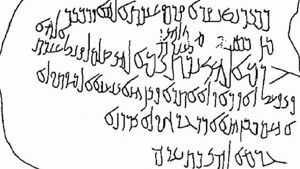
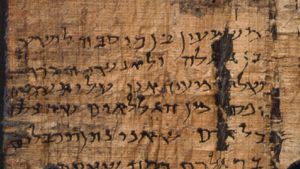
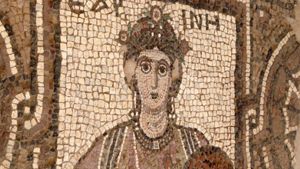
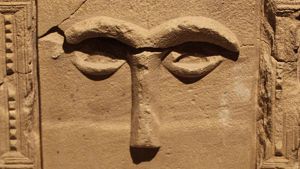
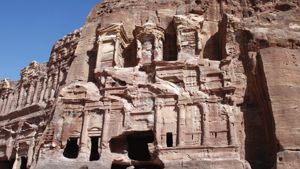
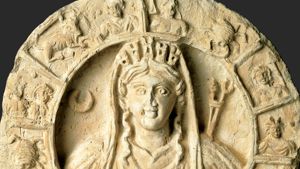
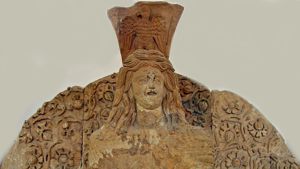

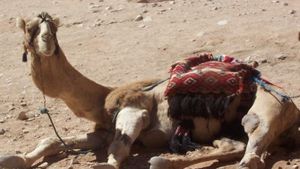
Page Discussion
Membership is required to comment. Membership is free of charge and available to everyone over the age of 16. Just click SignUp, or make a comment below. You will need a user name and a password. The system will automatically send a code to your email address. It should arrive in a few minutes. Enter the code, and you are finished.
Members who post adverts or use inappropriate language or make disrespectful comments will have their membership removed and be barred from the site. By becoming a member you agree to our Terms of Use and our Privacy, Cookies & Ad Policies. Remember that we will never, under any circumstances, sell or give your email address or private information to anyone unless required by law. Please keep your comments on topic. Thanks!